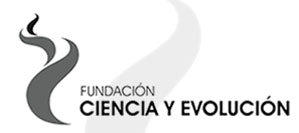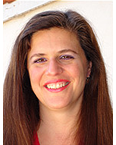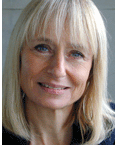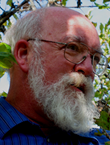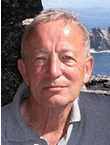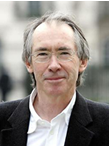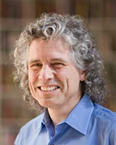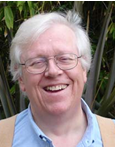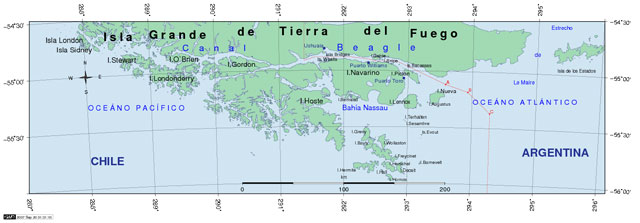WHY CHILE?
Chile played a very important role in Darwin's life and in his theory's development. This is a fact unknown to many, even in Chile. This role can be illustrated by three excerpts from his life:
To begin with, Darwin's trip around the world in the HMS Beagle (December 1831 – October 1836) was crucial for establishing his theory. The journey's purpose, under Captain Fitz Roy's command, was carrying out hydrographic surveys to improve the existing nautical charts of South America's southern tip, basically Argentinean and Chilean territories. Great Britain, as the ruling world power of the time, required control of the oceans in order to develop its sea trade. As a result of this, Darwin stayed in Chile for approximately one third of the journey's duration, as the expedition's naturalist. He traveled from Tierra del Fuego and the Magellan Strait up through Chiloé, Valdivia, Concepción, Valparaíso and Santiago. He then crossed the Andes Mountains to Mendoza and traveled by land from Valparaíso to Copiapó, among many other places. Also, this is the reason why one third of the chapters of his book "A Naturalist Around the World" are about his travels in Chile. The Beagle's journey allowed Darwin to undergo the profound and extended meditation that led him to his theory of evolution by means of natural selection, and a third of that process took place in Chile.
Secondly, and a little more speculatively, passing through Chile helped him reaffirm the idea, already hovering in his mind, that the world wasn't a static structure, but rather, that it needed to be described in an evolutionary manner. In those days, speaking about biological evolution was bold. The accepted view was that the world had been created according to the Biblical narrative. Although Erasmus, his grandfather, had spoken about evolution decades before, and Lamarck had already developed his own theory, none of them got it right. Biological evolution was only mentioned by isolated individuals, with no solid scientific basis. Their preliminary arguments were not capable of bringing forth a theory. Geology, on the other hand, was the fashionable science. Classic physics had already established its prestige, and geology was a consequence of it. Charles Lyell, the most renowned geologist of the time, spoke about evolution of the earth's crust, based on the evidence of geologic layers observable at a glance. For an Englishman like Darwin, even though Lyell's admirer, the concept of geological evolution was a rather theoretical one. The peaceful and unchanging landscape of the British countryside did not provide for a vivid evolutionary experience.
In opposition to that, while in Chile, on January 19th 1835, Darwin had the unique privilege of watching the Osorno volcano's eruption from Ancud, Chiloé. Then, on February 20th of the same year, he had the chance to verify with his own eyes the effects of the Concepción earthquake, which exposed areas previously submerged. He also observed big glaciers cracking down to the sea, creating immense waves and icebergs. Likewise, in the Andes Mountains, he admired sea fossils, acting as silent witnesses of mountains that were previously under seawater. All of this showed him very graphically the geological evolution that Lyell spoke so much about. Such a vivid, emotional experience, that went beyond intellectual understanding, probably molded in Darwin's mind the idea that geological variation, which Chilean geography exposed him to in all its majesty and magnificence, should go together with biological evolution, when wanting to explain the amazing biodiversity the world showed.
Very possibly, then, Darwin's travels in Chile were a previous solid step on which to mount his evolutionary thinking, relevant in the construction of his later theory.
The third episode that highlights Chile's role in Darwin's theory is rather anecdotal, but not less interesting. It deals with a "Chilean" (a native from the yamana ethnic group) who lived in Tierra del Fuego in those days: Jemmy Button. Captain Fitz Roy had to take over as captain of the HMS Beagle in December 1829. Its former captain, Pringley Stokes, committed suicide because he was deeply depressed, probably due to the area's climatic difficulties that prevented him from carrying out satisfactorily the mission the British Admiralty had entrusted him. Admiral Otway, the British officer with headquarters in Rio de Janeiro and responsible for his country's cartographic missions in that part of the world, appointed the 23 year old young lieutenant Robert Fitz Roy to fulfill Stoke's unfinished task. Otway ignored lieutenant Skyring's wishes to get the job – he was the HMS Beagle's second officer in command – to which he felt was entitled and deserved. In the following months, Fitz Roy discovered two big sounds, hidden in the northern part of the Magellan Strait, which he named Otway Sound and Skyring Sound, recognizing Otway's trust in him and graciously compensating for Skyring's frustration.
Due to the difficulties produced by the heavy storms, Fitz Roy had to make use of his whaler boats. This avoided dangerous sailings of the HMS Beagle along the canals. In one of the missions, the natives of the area stole one of the boats while it was resting on the beach and its occupants were exploring inland. Since it was very important to recover it, Fitz Roy began a pursuit to find the authors of the robbery, during which he took natives as hostages to force them to give out hints of the stolen boat's whereabouts. After one month, he realized it would not be possible to get the whaler boat back, but found that the hostage taking and freeing process had ended with him still holding four yamana hostages on board: Fueguia Basket, Jemmy Button, York Minster and Boat Memory (after the stolen boat), all of them named by the British.
Fitz Roy, an educated and refined aristocrat with a scientific leaning, decided that instead of returning the hostages back to their place of origin, he would convince them to come with him to England instead. He had actually thought of carrying out a social experiment, which consisted in educating the natives in the European way of life, and afterwards bringing them back, where they would be able to "civilize" their fellow natives. Boat Memory died from smallpox shortly after they arrived to England. Fueguia Basket, around 10 or 11 years old, Jemmy Button, around 15 years old and York Minster, around 25 years old, were put under the care and education of acquainted teachers as soon as they arrived in England, by the end of 1830. The whole endeavor was payed by Fitz Roy from his own money. The experiment caused great commotion and interest in the aristocratic social circles Fitz Roy was familiar with, and they were even taken to meet Queen Adelaide. However, after a few months, York Minster began sexual advances on Fueguia, who happened to be quite a charming girl. This caused great anxiety in Fitz Roy, since such a scandal in the Victorian England could defame his reputation, especially considering he had not requested a formal permission from the Admiralty to carry out this experiment in the first place. So, he decided to take the natives back as soon as possible. Hence, he rescheduled the continuation of the unfinished cartographic surveys with the HMS Beagle for that same year, 1831, 3 years ahead of his initial plan. He prepared his departure less than a year after they had gotten back to England. For this new trip, he decided he needed a naturalist on board, to gather the rich scientific information this voyage would generate, and also to serve as an intellectual companion during the long journeys at sea. The fact that Fitz Roy felt the urge of taking these "Chileans" back to their land as soon as possible, sailing much earlier than his original plan called for, was crucial for Darwin, and not some other person, to become the naturalist on board. Had Fitz Roy's original itinerary for 1834-1835 been kept, Darwin may have not been available; he might have been married, or busy with other scientific activities, and thus he would not have sailed on the HMS Beagle. We can speculate that he would not have had the long moments of brooding and observation granted to him by that journey, and thus he may not have formulated his theory of Evolution by means of Natural Selection. Those native Chileans, mainly remembered because Jemmy Button's tragic story has later been told in numerous opportunities, were crucial in the serendipitous Darwin's inclusion in the Beagle's voyage.
Due to these three episodes, of different strength and caliber, Chile became such an important place in Darwin's life, and that is why it is so attractive that our country be the venue of the seminars herein proposed.
___
1. Darwin, C., "The Origin of Species", chapter II
2. The HMS Beagle was 28 meters long, displacing 235 tons.
3. Robert Fitz Roy, was an aristocrat, grandson of the Duque of Grafton and nephew of Lord Castlereagh. He was born on July 5th, 1805 (the year the Battle of Trafalgar took place) in Hampton Road, Suffolk. His mother died when he was six, so he was sent to a boarding school in the vicinity of Brighton. At the age of 12, he joined the Royal Naval College at Portsmouth. He earned outstanding marks, the mathematics prize and became the first in his class. At the age of 14 he embarked as a voluntary student on board on the HMS Owen Glendower, on the way to South America. A year later he was promoted to midshipman. At the age of 19, after having served in the Mediterranean, the English Channel and South America, he was promoted to lieutenant, becoming the first in his promotion of 27 to achieve that rank. In 1831 the Admiralty put him in command of the second hydrographic expedition (1831-1836), complementing Stokes's interrupted first one, returning once again to South America as captain of the HMS Beagle. Among the passengers aboard were the three Fuegian natives (Boat Memory had died in England), and the young naturalist Charles Darwin. During this voyage, Darwin began to sketch his well known Theory of Evolution. By 1841 Fitz Roy held a seat at the British Parliament. He promoted the information gathering process for a safer navigation. In 1843 he was offered the post of Governor of New Zealand. His arrival in the island was not welcome, because of his permissiveness with the aboriginal Maori population and with foreigner groups that settled there. Two years later he returned to London. After holding several positions and retiring in 1850, he devoted his time to the building of meteorological statistics at the London's Commerce Chamber. Later on he founded what is nowadays the Meteorological Office or "Met Office". He promoted the installation of barometers and other devices for the statistic follow-up and forecast of the weather. By 1861 he gave the first alert signal through a telegraph line to the London media. Robert Fitz Roy killed himself in 1865. It is presumed that suicide was a strange familiar illness, because his uncle had already taken his life years before.
4. In whose memory one of the fiords of the Magellan Strait is named in Spanish "Seno Otway".
5. In whose memory another fiord of the Magellan Strait was named "Seno Skyring"
6. The original names were el'leparu, o'run-del'lico and yok'cushly. See images annex.
7. Fitz Roy wrote in his diary: "I had thought to take the fueguinos to England, thinking on the benefits I would give them by knowing our habits and language. This would compensate for the temporary distance from their country. But I had not that in mind when I brought them on board. At that moment I only thought on keeping them while we were along these coasts. But afterwards, when I saw they were happy and in good health, I started thinking in the many advantages that they and their countrymen could derive from this, as well as for us if we took them to England. There we could educate them as much as possible and afterwards we could send them back to Tierra del Fuego. By choosing this last course I assumed a big responsibility, but I was aware of what I was doing".
BACK TO EVENT PAGE: DARWIN IN CHILE


